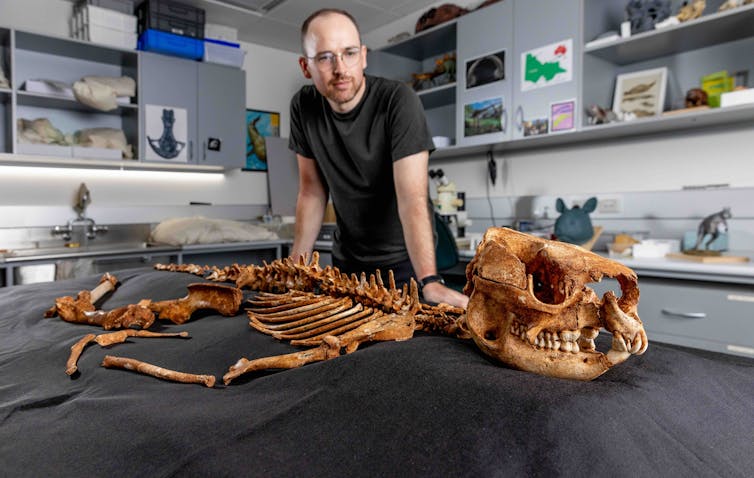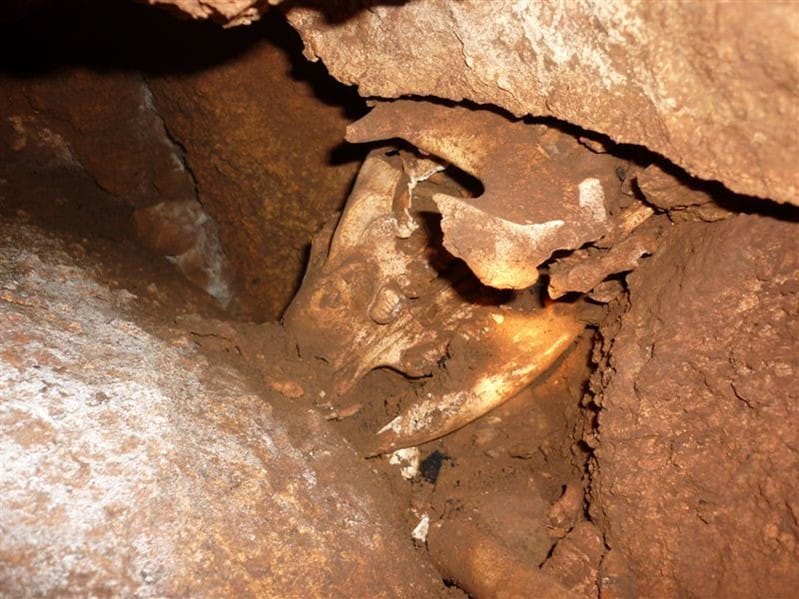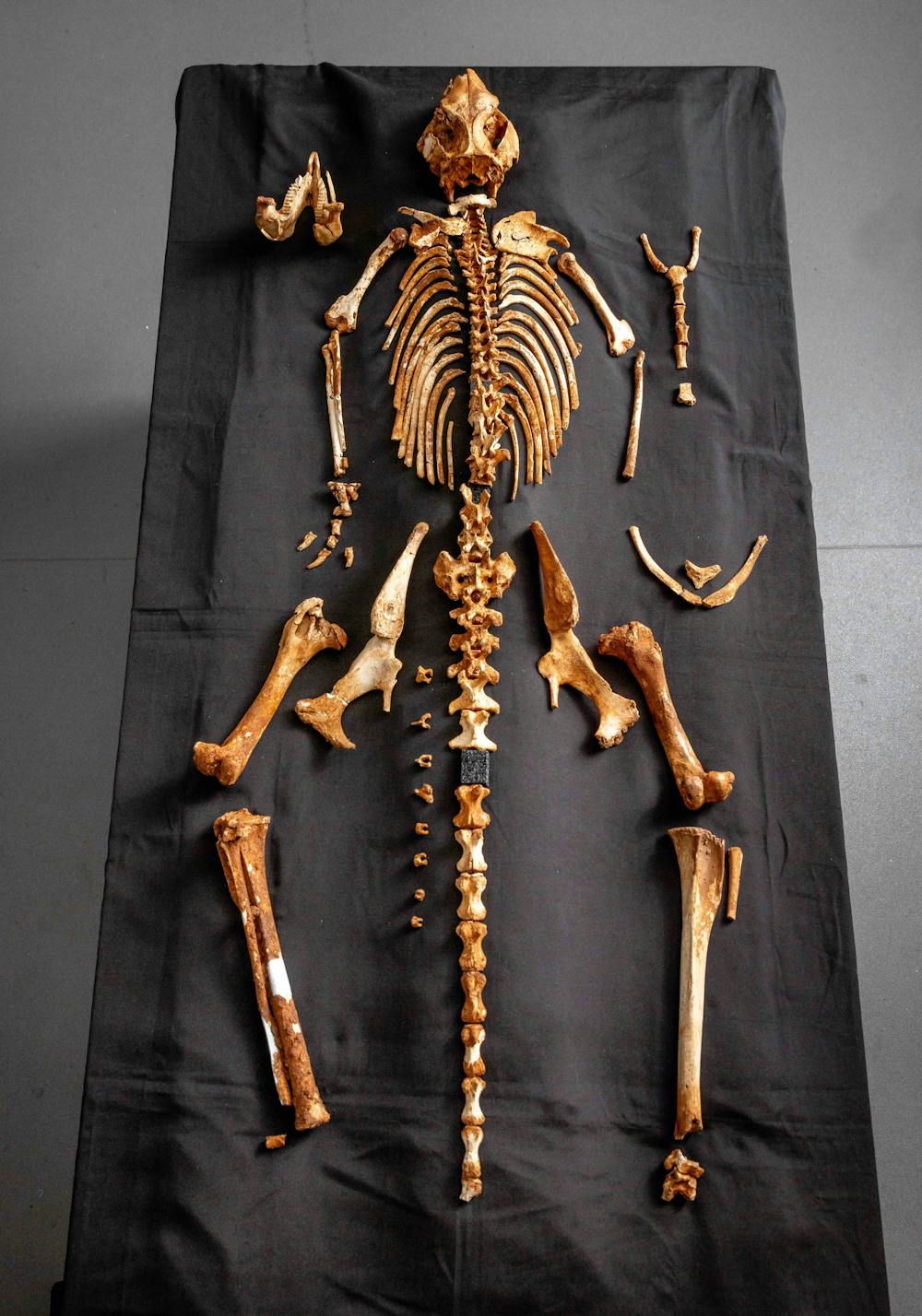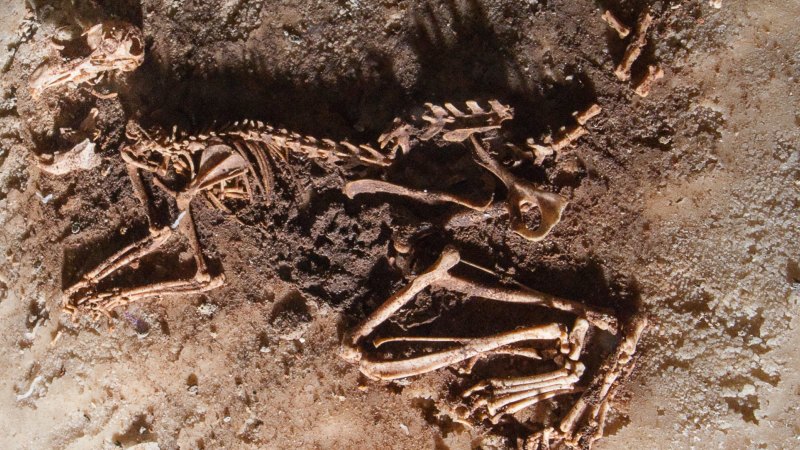Pitch-black darkness. Crushing squeezes, muddy passages, icy waterfalls. Bats and spiders. Abseiling over ledges into the unknown. How far would you go for a fossil?

On a two-year retrieval mission of nearly 60 hours in an underground cave, we met our limits—and went beyond.
The limestone slope of Potholes Cave Reserve is found in Gunaikurnai Country, north of the township of Buchan in eastern Victoria.

Here, the river valley is peppered with shadowy entrances to underground caves. Portals barely large enough to permit a willing caver open into kilometers of subterranean passages encrusted with delicate crystals twinkling in torchlight.
In one of them, Nightshade Cave, the Museums Victoria Research Institute led a team of recreational cavers and Parks Victoria rangers to excavate an extraordinary fossil: a near-complete skeleton of the extinct short-faced kangaroo Simosthenurus occidentalis. In June this year, it will appear on display at Melbourne Museum.

As is so often the case in paleontology, the discovery began with engaged citizens out in nature. In 2011, a local caving group first entered Nightshade Cave through an opening previously blocked by soil. One of the group, Joshua Van Dyk, sighted an unusual animal skull.
Recognizing its potential significance, he reported the find to Melbourne Museum. However, Van Dyk reckoned it was irretrievable, appearing to be crushed under boulders in a narrow vertical collapse. The cave was gated shut to protect its contents, and a decade passed quietly.
In 2021, I took an interest in the intriguing find. Members of the Victorian Speleological Association were only too happy to assist a return to the cave.

Rigging a ropeline, we abseiled down a tight 10-meter rift, emptying our lungs to pass tight points in midair. We corkscrewed into a narrow passage and wormed, single-file, through low-domed chambers hung with dripping stalactites and plastered by popcorn-like calcite formations.
On our return trips, I carefully brushed away fine layers of mud and we photographed and packed the newly freed fossils. The skull had a deep muzzle, with robust jaws and teeth that marked it as a short-faced (sthenurine) kangaroo.

Behind it were more bones. It was a marvel to see vertebrae, shoulders and hips, limbs and a narrow ribcage: many of the bones were wholly undisturbed and still in their original positions. This was a single animal, not a random scattering of bones. It felt like a fossil holy grail.
A detailed comparison to fossils in the Museums Victoria State Collection gave our skeleton its identification as Simosthenurus occidentalis. Comprising 150 preserved bones, it is the most complete fossil skeleton found in a Victorian cave to date.
That it is a juvenile rather than adult kangaroo further distinguishes it from other examples of the species. Its teeth show little wear, its skull bones are still unfused, and its limb ends had not yet joined, suggesting it was still young at its time of death.
From the size of its limbs, we estimate it weighed around 80 kilograms—as much as an average person—but might have grown half as large again had it reached adulthood.

